mobile View, to the German Version tap the flag


- Federal presidial Republic
• Flags
• Historical Flags
• Meaning/Origin of the Flag
• Coat of Arms
• Meaning/Origin of the Coat of Arms
• Aircraft Roundel
• Map
• Federal States
• Exterior possessions
• Numbers and Facts
• History
• Origin of the Country's Name

since 1960,
National, state, merchant and naval flag,
ratio = 10:19,
Source, by:
Flags of the World,
Corel Draw 4





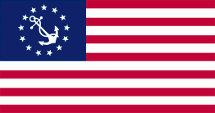
Flag for water sports vessels (yacht flag),
ratio = 10:19,
Source, by: Flags of the World



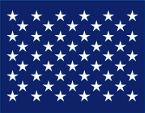
1960–2002, since 2019,
Naval jack,
ratio = 71:100,
Source, by: Flags of the World



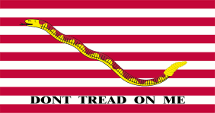
2002–2019,
Naval jack,
ratio = 2:3,
Source, by: Flags of the World



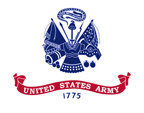
Flag of the Army,
ratio = 63:80 (?),
Source, by: United States Institute of Heraldry,
Public domain, via Wikimedia Commons





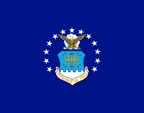
Flag of the Air Force,
ratio = 63:80 (?),
Source, by: Dorothy G. Gatchell,
Public domain, via Wikimedia Commons





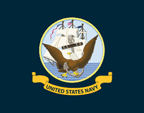
Flag of the Navy,
ratio = 63:80 (?),
Source, by: United States Department of the Navy,
Public domain, via Wikimedia Commons





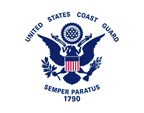
Flag of the Coast Guard,
ratio = 63:80 (?),
Source, by: U.S. Army Institute of Heraldry,
Public domain, via Wikimedia Commons



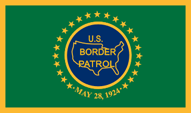
Flag of the Border Patrol,
ratio = 7:12,
Source, by: United States Border PatrolVectored by FOX 52.,
Public domain, via Wikimedia Commons



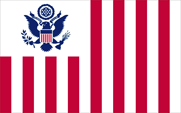
Flag of Customs,
ratio = 11:18,
Source, by: Ibagli,
Public domain, via Wikimedia Commons



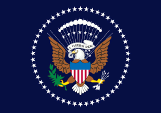
Flag of the President,
ratio = 7:10,
Source, by: Flags of the World,
Corel Draw 4





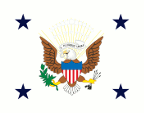
Flag of the Vice President,
ratio = 63:80,
Source, by: Flags of the World,
Corel Draw 4




The flag of the USA, with its stars and stripes, was introduced in this basic form on 14th of June in 1777. Today it shows thirteen horizontal white and red stripes. The top corner is blue and shows fifty white five-pointed stars. The thirteen stripes symbolise the thirteen British colonies that formed a union in 1775 to protect the rights to which they believed they were entitled vis-à-vis United Kingdom. Since 1818, the number of states belonging to this union has been represented by the number of white stars in the blue field. Since 4th of July in 1960 (admission of Hawaii to the USA), there have been fifty of them. The colours blue, white and red have their origin in the British "Union Jack", which could even be seen in the flag of the USA for one year (until 1777). Today, the colours have the following meaning: blue stands for justice and perseverance, white for purity and modesty, red for strength and courage.
The US-regulation "DDD-F-416F" defines the exact colour tones for red, white and blue as they must be used and implemented by federal authorities. These are coordinates of the CIE colour space that can be translated into HEX values and result in the following values: #FFFFFF for white, #B22234 for red and #3C3B6E for blue. In addition, there is the "Standard Colour Reference of America", in its 10th edition, which provides a series of samples of dyed silk fabrics that are used as a reference. The resulting true colours are as follows: White No. 70001, Old Glory Red No. 70180 and Old Glory Blue No. 70075, from which the following Pantone colour shades can be derived: Red = pt 187 c and Blue = pt 5265 c, which are not official or official colour values. The flag of the state of Texas must correspond exactly to the flag of the USA in terms of colour, which is why official Pantone colour tones have been defined for Texas: Red = pt 193 c and Blue = pt 281 c.
The yacht flag is not an official flag and may only be used in coastal waters. It was originally a special flag created in 1848 for private vessels to indicate that they did not have to report to the customs authorities in a harbour. The presidential flag was introduced in its current form on 29th of May in 1946. It is single-coloured blue and shows the presidential seal in a circle of fifty stars. The flag of the Vice-President was introduced in its present form on 7th of October in 1975 after a number of changes. It is white, shows the presidential seal in the centre and a dark blue five-pointed star in each corner of the flag.
→ Flag History ←
Source:
Flags of the World,
Wikipedia (EN),
Die Welt der Flaggen,
Flaggen Wappen Hymnen,
Flaggen und Coat of arms of the Welt,
Volker Preuß

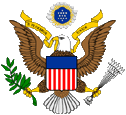
Coat of arms of the USA,
Source: Corel Draw 4

The national emblem of the United States was adoped on 20th of June in 1782, according to other sources on 20th of July in 1782, as the seal of the sate. It was created by William Barton and Charles Thomson and shows a white-headed eagle with an olive branch and thirteen silvery arrows in its claws. They symbolize that the U.S. Congress is able to decide on war or peace, and they stand exactly like the thirteen stars in the blue field over the head of the eagle, for the thirteen original colonies, from which the United States emerged. To the left and to the right of the head of the eagle a golden banner with the inscription "E pluribus unum" → "Out of many, one".
Source:
Die Welt der Flaggen,
Flaggen Wappen Hymnen,
Flaggen und Coat of arms of the Welt,
Volker Preuß

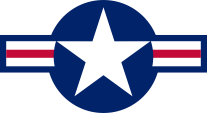
since 1947,
Aircraft Roundel,
Source, by: Wikipedia (EN)

1918–1919,
Aircraft Roundel,
Source, by: Wikipedia (EN)

1919–1942,
Aircraft Roundel,
Source, by: Wikipedia (EN)

1942–1943,
Aircraft Roundel,
Source, by: Wikipedia (EN)
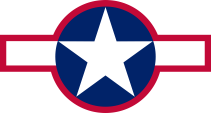
1943,
Aircraft Roundel,
Source, by: Wikipedia (EN)
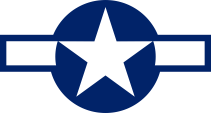
1943–1947,
Aircraft Roundel,
Source, by: Wikipedia (EN)

Location:
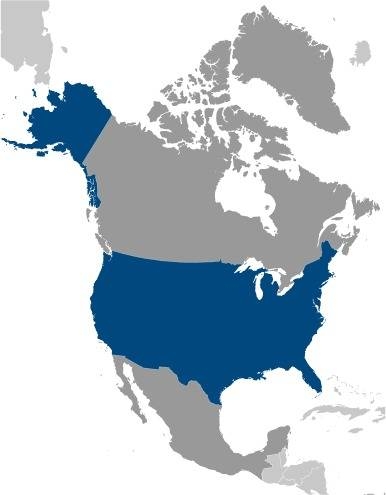
Source: CIA World Factbook
Map of the country:
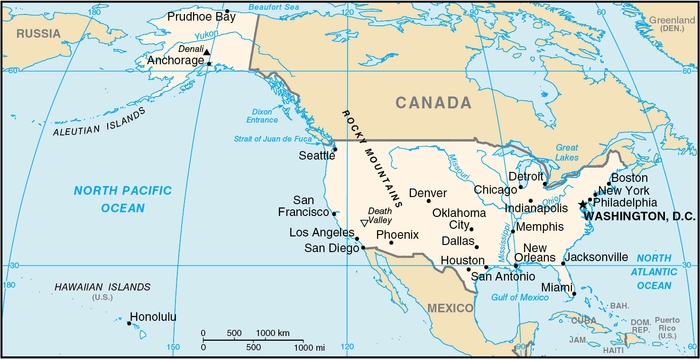
Source: CIA World Factbook
The Federal States:
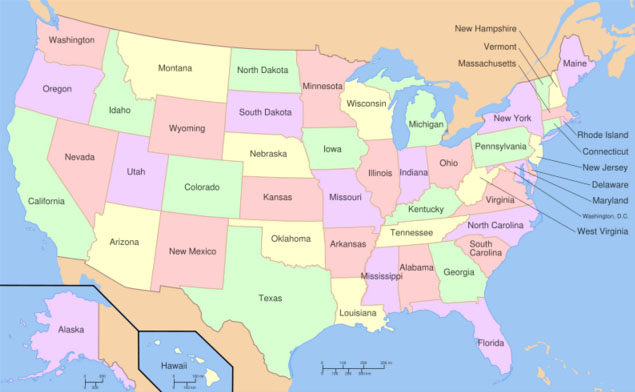
Source: Printable Maps

Alabama
Alaska
Arizona
Arkansas
Colorado
Connecticut
Delaware
District of Columbia
Florida
Georgia
Hawaii
Idaho
Illinois
Indiana
Iowa
California
Kansas
Kentucky
Louisiana
Maine
Maryland
Massachusetts
Michigan
Minnesota
Mississippi
Missouri
Montana
Nebraska
Nevada
New Hampshire
New Jersey
New Mexico
New York
North Carolina
North Dakota
Ohio
Oklahoma
Oregon
Pennsylvania
Rhode Island
South Carolina
South Dakota
Tennessee
Texas
Utah
Vermont
Virginia
Washington
West Virginia
Wisconsin
Wyoming

American Samoa
Guam
Virgin Islands of USA
Northern Mariana Islands
Puerto Rico
Midway Islands
Wake Island

Area: 3.677.632 square miles
Inhabitants: 334.914.895 (2023), thereof 58% Whites, 19% Hispanics and Latinos, 12% Blacks, 6% Asian, 0,7% Indians und Eskimo
Religions: 43% Protestant, 20% Roman Catholic, 2% Mormons, 2% Jewish, 1% Muslim, 1% Hindu, 1% Buddhist, 26% Non-Religious
Density of Population: 91 inh./sq.mi.
Capital: Washington, 689.545 inh. (2020)
Languages: English, Spanish, French, German — more Info? click or tap here
Currency: 1 U.S. Dollar (USD, US$, $) = 100 Cent
Time Zone: GMT –5 to –10 h
Source:
Wikipedia (DE)

15.000 B.C. · settlement from Asia via Alaska southward
ca. 1000 A.D. · the Viking Leif Eriksson discoveres America
1394 · the Venetian seafarer Zeno discoveres America again
1492 · Christopher Columbus the Genoese seafarer in Spanish services discoveres America again (Bahamas)
24th of June 1497 · Giovanni Caboto (John Cabot) the Italian seafarer in British services discovers the American mainland (Labrador)
1498 · Giovanni Caboto (John Cabot) the Italian seafarer in British services sailes along the east coast of the today's USA
1513 · Spain takes Florida in possession
1542 · the Spanish seafarer Cabrillo reaches the west coast of the today's USA from Mexico (California), the Spanish researcher and conquistador Coronado reaches the today's New Mexico over land, the Spanish researcher and conquistador de Soto travels thorough today's Florida,South Carolina, Alabama and Mississippi
1565 · the Spanish seafarer Urdaneta reaches the west coast of the today's USA (California) from the Philippines
1578 · the English seafarer Francis Drake explores the west coast of the today's USA (California)
1578 · the English seafarer Walter Raleigh explores the east coast of the today's USA
1585 · the English seafarers Walter Raleigh founds the first English colony on the east coast at Roanoke River, but it is later abandoned
1600–1670 · France colonizes along the St. Lawrence river and reaches the north of the Great Lakes
1607 · founding of Jamestown on the coast of Virginia, under the name "Virginia" the first English colony on the east coast
1609 · the English seafarer Henry Hudson explores the east coast of the today's USA
1613 · founding of New Amsterdam (later New York) on the Hudson River, the first Dutch settlement in the north of the east coast of the today's USA, and later center of the Dutch colony of New Netherlands
1638 · formation of New Sweden (later Delaware), the first Swedish settlement on the east coast of the today's USA
1650–1680 · Spain in possession the south of today's, about the current states of California, Arizona, New Mexico, Texas, Louisiana, which becomes gradually colonized, also land on the west side of the Mississippi, about the current states Arkansas, Missouri, Iowa, Minnesota, but it becomes only moderately or not colonized
1655 · New Sweden is owned by Dutch
1664 · New Sweden (Delaware) becomes a British possession
1664 · New Netherlands, becomes a British possession
1670–1690 · France colonizes in the south of the Great Lakes and along the Mississippi, in roughly the present states of Michigan, Indiana, Wisconsin, Monnesota, Iowa, Missouri, Illinois, Arkansas, Louisiana, Mississippi
1695–1720 · France colonizes at the mouth of the Mississippi
1733 · founding of the royal Colony of Georgia, in this way there exist on the east coast thirteen British colonies, so the so named New England Colonies (New Hampshire, Massachusetts, Connecticut, Rhode Island), the so named Middle Colonies (New York, Delaware, New Jersey, Pennsylvania) and the Southern Colonies (Virginia , Maryland, North and South Carolina, Georgia)
1754–1763 · Seven Years' War, conflict between United Kingdom and France, France has to cede all areas in Canada and east of the Mississippi to United Kingdom in 1763, but for the thirteen British colonies it is not allowed to extend to the west and they have to carry the economic consequences of this war
1764 · Molasses Act, prohibition of trade for te British colonies with France and Spain
1765 · United Kingdom introduces the stamp tax
1765 · establishment of the resistance movement "Sons of Liberty", a congress of the colonies decides to boycott British goods
16th of December 1773 · "Boston Tea Party", British goods are thrown into the sea
1774 · United Kingdom annexes the former French possessions on Ohio River to Canada, revolt in Massachusetts, United Kingdom imposed the state of emergency (repeal of the Constitution), on the other hand the colonists organize the 1st Continental Congress, termination of trade with United Kingdom, the establishment of the Minutemen Militia, terror against colonists which are loyal to the King
19th of April 1775 · battles of Lexington and Concord, the beginning of the independence war (until 1783)
4th of July 1776 · declaration of independence
17th of October 1777 · Battle of Saratoga, heavy defeat of the British troops
15th of November 1777 · adoption of the Articles of Confederation (establishment of the USA)
1778 · the USA ally with France
1778 · the USA ally with Spain
1780 · the USA ally with the Netherlands
19th of October 1781 · Battle of Yorktown, surrender of British troops
30th of November 1782 · the Separate Treaty with United Kingdom recognizes the independence of the United States
3rd of September 1783 · Treaty of Paris, the independence of the United States becomes confirmed
1788 · first constitution
1791 · supplementing of the constitution with the the Bill of Rights
1803 · the USA buy the Louisiana colony from France (the present states Montana, the southwest of North Dakota, the northeast of Wyoming, South Dakota, Minnesota, Iowa, Nebraska, the northeast of Colorado, Kansas, Missouri, Oklahoma, Arkansas and Louisiana)
1804–1807 · attempts to separate New England from the USA with British support
1810–1813 · the USA annex West Florida
1812–1814 · US-american-British war, without results
1814 · Hartford Convention, new attempt to separate New England from the USA with British support
1818 · United Kingdom cedes the northeast of today's North Dakota to the USA
1819 · the USA acquire Florida from Spain
1836 · the USA support the secession of the State of Texas from Mexico
1845 · Texas joins the USA
1846 · United Kingdom cedes the Oregon territory to the United States (the today's states Oregon, Washington and Idaho)
1846–1848 · war against Mexico, annexation of Mexican territory (the today's states of California, Nevada, Utah, Arizona, and parts of Wyoming, Colorado and New Mexico)
1853 · the USA acquire the south of today's Arizona from Mexico (Gadson Purchase)
1854 · founding of the Republican Party
6th of November 1860 · election of Abraham Lincoln (Republican) as President of the USA
20th of December 1860 · South Carolina declares its withdrawal from the Union in accordance with the constitution of the USA
January to February 1861 · withdrawal of ten further states
8th of February 1861 · founding of the Confederate States of America (CSA, Southern States)
4th of March 1861 · inauguration of Lincoln
12th to 14th of April 1861 · "bombardment of Fort Sumter", in reality a small battle with a few slight injuries
15th of April 1861 · Lincoln urges 75.000 volunteers to arms, a de facto declaration of war on the CSA, the beginning of the secession war
9th of April 1865 · General Lee surrenders at Appomattox (Virginia) as commander of the Confederate Army of Northern Virginia, the other CSA Armies capitulate gradually until July 1865
18th of December in 1865 · the in January 1865 by the US Congress adopted 13th amendment to the constitution becomes valid, so that slavery in the area of USA is finally abolished
1865–1877 · "Reconstruction", forced return of the CSA states in the Union
1867 · the USA acquire Alaska from Russia
April to August 1898 · mysterious explosion of the U.S. warship "Maine" in Havana, US military intervention, Spanish-US-american War, Peace of Paris: Spain's has to cede its colonial empire for the most part to the United States (Cuba, Philippines, Puerto Rico)
7th of July 1898 · annexation of Hawaii
1903 · Cuba becomes a protectorate of the United States, Panama cedes the Canal Zone to the USA
1905 · US military intervention in Honduras
1906–1909 · US military intervention in Cuba
1907 · US military intervention in Honduras
1911 · US military intervention in Honduras
1912–1932 · US military intervention in Nicaragua
1913 · US military intervention in Honduras
1914 · US military intervention in Mexico
1915 · US military intervention in Haiti
1916 · US military intervention in Mexico and in the Dominican Republic, the USA buy the Virgin Islands from Denmark
6th of April 1917 · declaration of war against the German Empire, the USA will participate in the First World War (until November 1918)
1918 · US military intervention in Siberia
1919 · US military intervention in Costa Rica
1919–1924 · US military intervention in Cuba
1924 · US military intervention in Honduras
8th of December 1941 · declaration of war on Japan, the United States participate in the Second World War (until September 1945)
25th of June 1950 · US military intervention in Korea (until July 1953), US military intervention in Taiwan
1958 · US military intervention in Libanon
1962 · US military intervention in Thailand
1963 · US military intervention in Vietnam (until 1973)
1983 · US military intervention in Grenada
1989 · US military intervention in Panama
1991 · US military intervention in Iraq (Second Gulf War)
1994 · US military intervention in Haiti
2001–2021 · US military intervention in Afghanistan
20th of March 2003 · US military intervention in Iraq (Third Gulf War)
Source:
Atlas zur Geschichte,
Wikipedia (D),
World Statesmen,
Discovery '97,
Weltgeschichte,
Volker Preuß

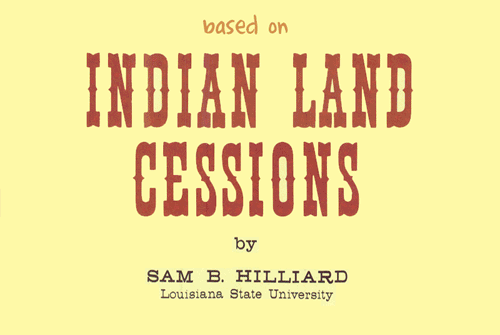
The name "United States of America" recalled that the USA is a confederation of states, and that they were created by union of thirteen British colonies. The United States call themselves just "America", even officially, as they would stand for the whole continent.
Source:
Volker Preuß


![]()


































